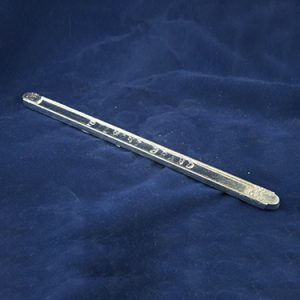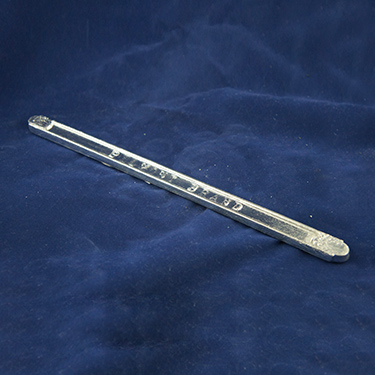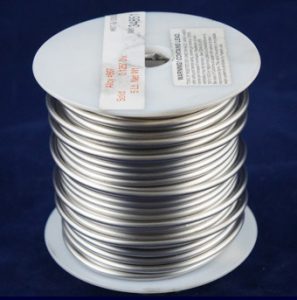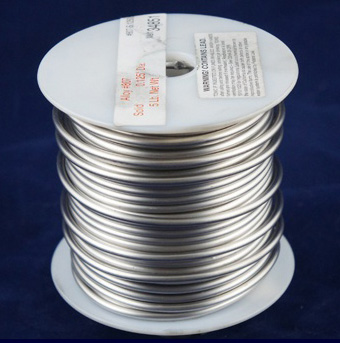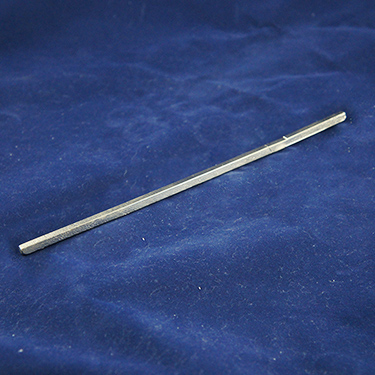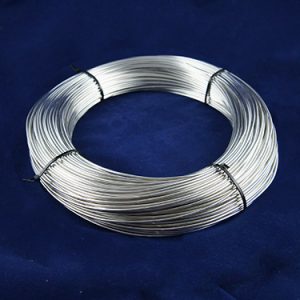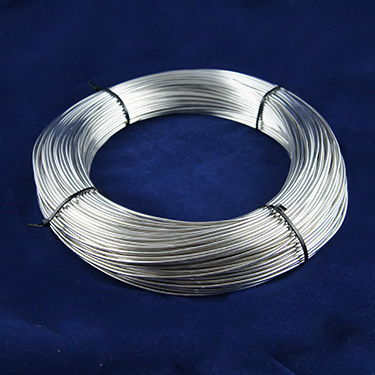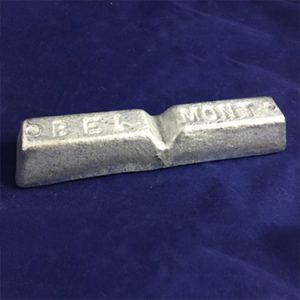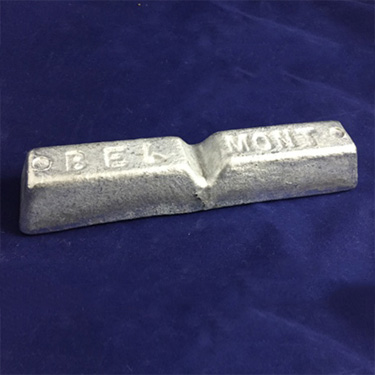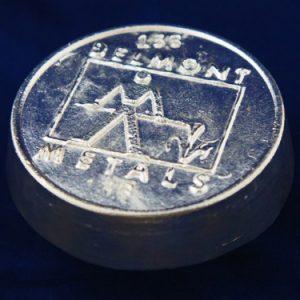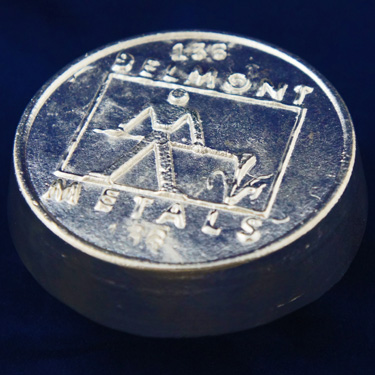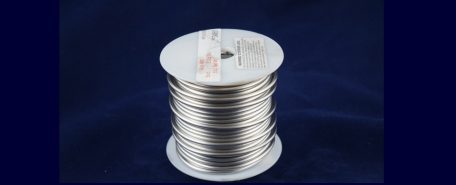While tin (Sn) is not mentioned as often as copper, it is another widely used metal for industrial applications. Tin is used most in electroplating, where the metal is used to coat other base metals to provide protection from other factors such as corrosion. Electroplating can also provide a more aesthetically pleasing appearance. The tin…
Featuring: Body solders, Lead-base, Lead-free solders, Low melting solders, Miter-Al-braze (MAB), Tin-Antimony solders, Tin-base, Tin-Cadmium solders, Tin-Lead solders, Tin-Zinc solders
Soldering is a process in which two or more metal items are joined together by melting and flowing a filler metal (solder) into the joint, the filler metal having a lower melting point than the adjoining metal. Soldering differs from welding in that soldering does not involve melting the work pieces. In brazing, the filler melts at a higher temperature, but the work piece metal does not melt. In the past, nearly all solders contained lead, but environmental concerns have increasingly dictated use of lead-free alloys for electronics and plumbing purposes.
Belmont offers a range of high, medium, and low temperature soldering alloys to meet a variety of different needs.
Applications: Electronics, Plating, Plumbing, HVAC
Forms: Ingot, Regular Bar, Capping Bar, Nuggets, Shot, Special Forms
Read More
Showing all 15 results
Featured products
-
Can be used for various soldering methods including Wave, Selective, and Hand. Known for best in class yields, this material outperforms all Sn/Cu based materials and delivers excellent performance across a wide range of Flux Technologies. SAC305 is used to stabilize the copper content in the wave solder bath depending on process conditions. Forms: - Regular Bar
- Shot
- Ingot
Belmont Product Code 7972 Nominal Composition: - Sn: 96.5%
- Ag: 3%
- Cu: 0.5%
Technical Info: - Solidus: 217 C (423 F)
- Liquidus: 220 C (428 F)
-
This Solder has good corrosion resistance and tensile strength. With a melting range beginning at 390 Deg. F. it avoids causing damage to critical electronics as well preventing substrate deformation and segregation. It is used very often in spray wire form for capacitors and other electronic parts. Forms: - 1/16" Dia. Plus .000" Minus .004" on 5 Lb. Spools
- 2-5 Ingot
- Cast Flat Anodes
Belmont Product Code 7601DS1C Nominal Composition: - 60.5% Sn
- 39.5% Zn
-
Tin-Lead solders is the largest single group and the most widely used of the soldering alloys . Tin-Lead solders are compatible for use with all types of base metal cleaners, fluxes, and heating methods. 60/40 Tin Lead solder, almost the eutectic is particularly adaptable to delicate work or when soldering temperature may be critical. This particular item comes in 1/16" Diameter and can also be offered in other sizes as well. This is also a quick setting solder for fine electrical and tinsmith work. Forms: - 1/16" Dia. Solid Wire
Belmont Product Code 76001DSC Nominal Composition: - 60% Sn
- 40% Pb
-
This is a Bismuth based non-eutectic alloy commonly used as a low-melting solder and also to make custom shaped blocks. It is also used to make metal inlays in wood and also useful for repairing antiques as the low melting temperature of Wood's metal makes it unlikely this will harm the original piece. Forms: - 1/4" Dia. Solid Wire
- 1/8" Dia Solid Wire
Belmont Product Code 2502DS1C Nominal Composition: - 12.5% Sn
- 25% Pb
- 50% Bi
- 12.5% Cd
-
Lead Silver solders such as this have physical properties - tensile, creep, and shear strength - which are good to 350 Deg. F. Fatigue properties are also better than the non silver solder alloys. Forms: - .063 Dia. Solid Wire
- 5Lb. Spools
- Capping Bars
Belmont Product Code 5951DS1C Nominal Composition: - 60% Sn
- 40% Pb
- 5.5% Ag
RELATED POSTS

Tin Lead Wire: Common Solder for a Wide Range of Applications
Soldering is performed in a wide range of industries including plumbing, electronics, heating/AC and manufacturing processes. Selecting the right solder is based on many factors including the solder’s melting temperature range, the properties of the soldering wire for the application, bonding capabilities, and the strength and hardness of the solder. Tin lead wire is a…

Popular Uses for Tin Zinc Solders
Are you trying to decide if zinc solder would be right for your business? Zinc is useful in soldering applications that require lower temperatures. For example, if you wanted to solder aluminum or copper. The basic formulation is comprised of 70 percent tin and 30 percent zinc. Here at Belmont Metals in Brooklyn, we sell…

Low-Melting Alloys Containing Indium: Characteristics and Applications
Often when thinking about metal alloys, we consider the strength and durability of the metal to withstand a range of loads, stresses and extreme temperatures. Yet there are a range of manufacturing applications where an alloy needs to have a low melting characteristic. A low-melting alloy, also called fusible alloy, can take a liquefied or…

Applications Using Low Melting Alloys
Low melting alloys are considered fusible alloys because they melt at temperatures below 300 degrees are often combined with other metals in order to increase certain properties. For example, Bismuth is often combined with tin and/or silver to create lead-free solders that are non-toxic. Low Melting Alloy Applications and Uses Low melting alloys can be…

Liquid metal’s low melting point
Fusible alloys’ low melting point makes them useful in a wide variety of applications The melting point of aluminum is 1,220 degrees Fahrenheit. Carbon steel melts somewhere between 2,600 and 2,800 degrees Fahrenheit, and the temperature needs to rise all the way up to 6,150 degrees Fahrenheit to melt tungsten. Specialized furnaces are needed to…

